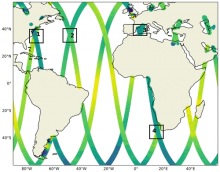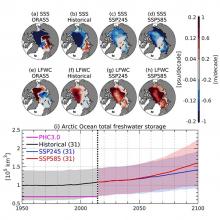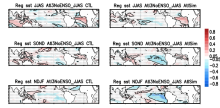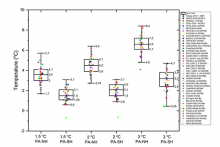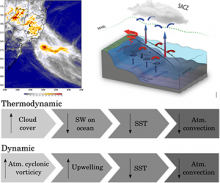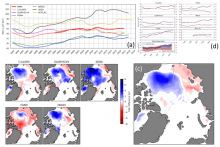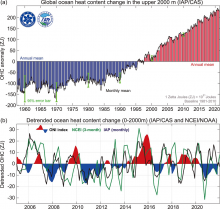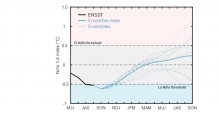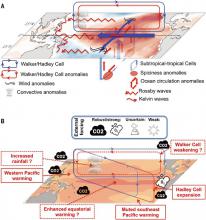Science Highlights
The Barents Sea Opening: shifting from a freshwater sink to source for the Arctic Ocean
Submitted by Qian Zhao on Fri, 2022-09-30 07:33Recently, together with colleagues, two members from CLIVAR Ocean Model Development Panel (OMDP) conducted a comprehensive analysis on the Arctic sea surface salinity (SSS), liquid freshwater content (LFWC) and freshwater budget by comparing the CMIP6 to the CMIP5 results, showing that the salinity of the Barents Sea Opening is projected to keep declining in the future.
Impact of extratropical thermal forcing in the simulation of tropical Atlantic-Pacific basin interactions
Submitted by Qian Zhao on Mon, 2022-06-06 08:13A recent paper on this subject by researchers at the University Complutense of Madrid examines the role of tropical convection, specially the location of the Inter Tropical Convergence Zone (ITCZ), in the occurrence of the two main tropical Atlantic-to-tropical Pacific basin interactions: the equatorial Atlantic to equatorial Pacific teleconnection, and the North Tropical Atlantic to equatorial Pacific teleconnection.
Polar warming and ice free conditions under Paris Agreement thresholds as simulated by CMIP5 and CMIP6 models
Submitted by Qian Zhao on Fri, 2022-04-08 09:04Sea surface cooling mechanisms caused by oceanic SACZ episodes at Southwestern Atlantic
Submitted by Qian Zhao on Thu, 2022-04-07 09:44A recent study led by Dr Luciano Pezzi, member of the CLIVAR/CliC/SCAR Southern Ocean Region Panel, was published in Climate Dynamics. This work brings a new approach to the study and understanding of the oceanic surface cooling that the oceanic South Atlantic Convergence Zone (SACZ) causes, concerning air-sea interaction processes.
Freshwater in the Arctic Ocean 2010–2019
Submitted by Liping Yin on Wed, 2022-02-02 07:45In the recent review paper, "Freshwater in the Arctic Ocean 2010–2019", the CLIVAR/CliC Northern Ocean Region Panel assess how the Arctic freshwater budget has changed since the 2000s using ocean reanalyses, in-situ observations,and satellite measurements
Another Record: Ocean Warming Continues through 2021 despite La Niña Conditions
Submitted by Jing Li on Mon, 2022-01-17 02:33A recent study published in Advances in Atmospheric Sciences (https://doi.org/10.1007/s00376-022-1461-3), led by Dr. Lijing Cheng, member of CLIVAR GSOP, provides the first analysis of recent OHC changes through 2021 from two international groups, i.e. IAP/CAS in China and NCEI/NOAA in the US.
A Decade of Eastern Tropical Indian Ocean Observation Network (TIOON)
Submitted by Jing Li on Tue, 2021-11-16 11:16Sea surface waves can dramatically improve the simulation and prediction ability of ENSO
Submitted by Liping Yin on Thu, 2021-11-11 11:16Decadal climate variability in the tropical Pacific
Submitted by Jing Li on Fri, 2021-10-15 09:32A recent synthesis coordinated and largely contributed by the CLIVAR Pacific Region Panel, published in Science (Power et al., 2021, https://doi.org/10.1126/science.aay9165), reviews the current understanding of TPDV and provide recommendations to improve our understanding of TPDV and our ability to predict it.





